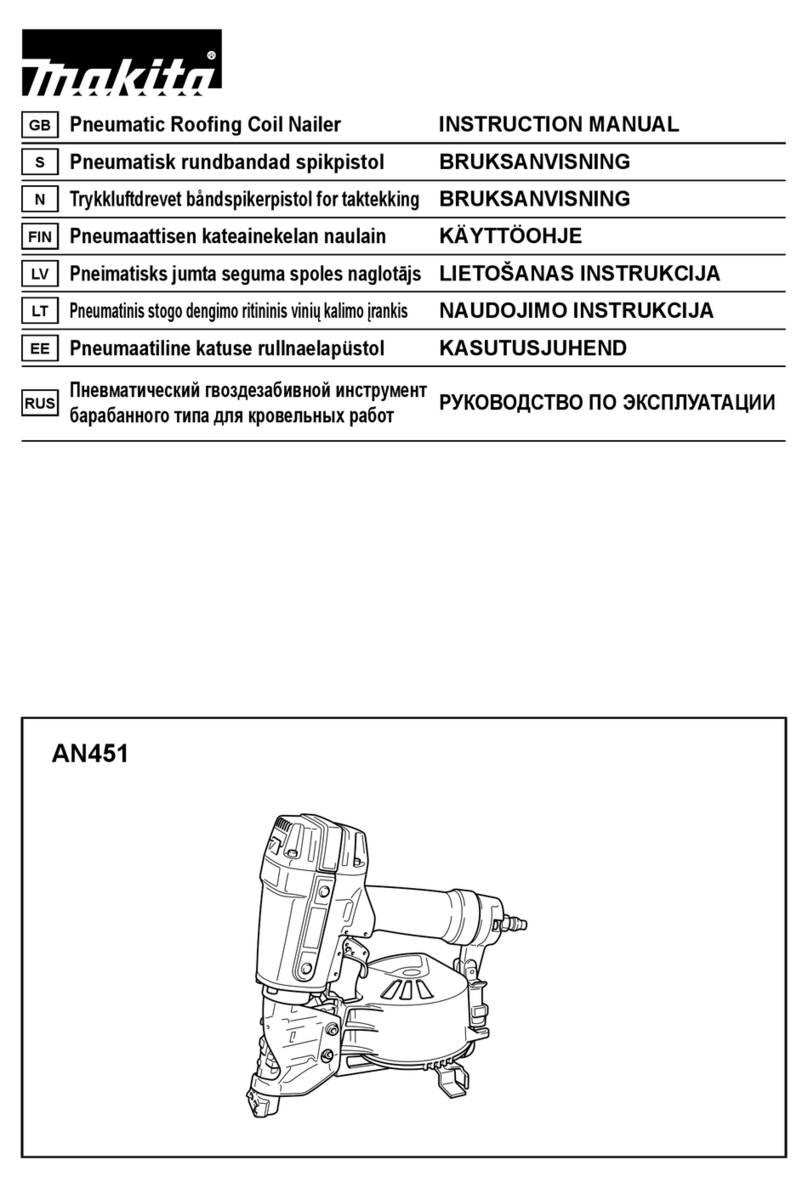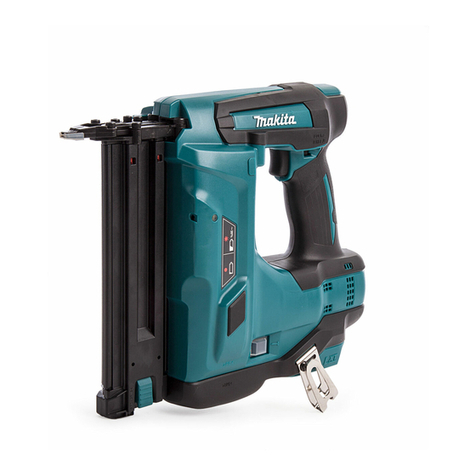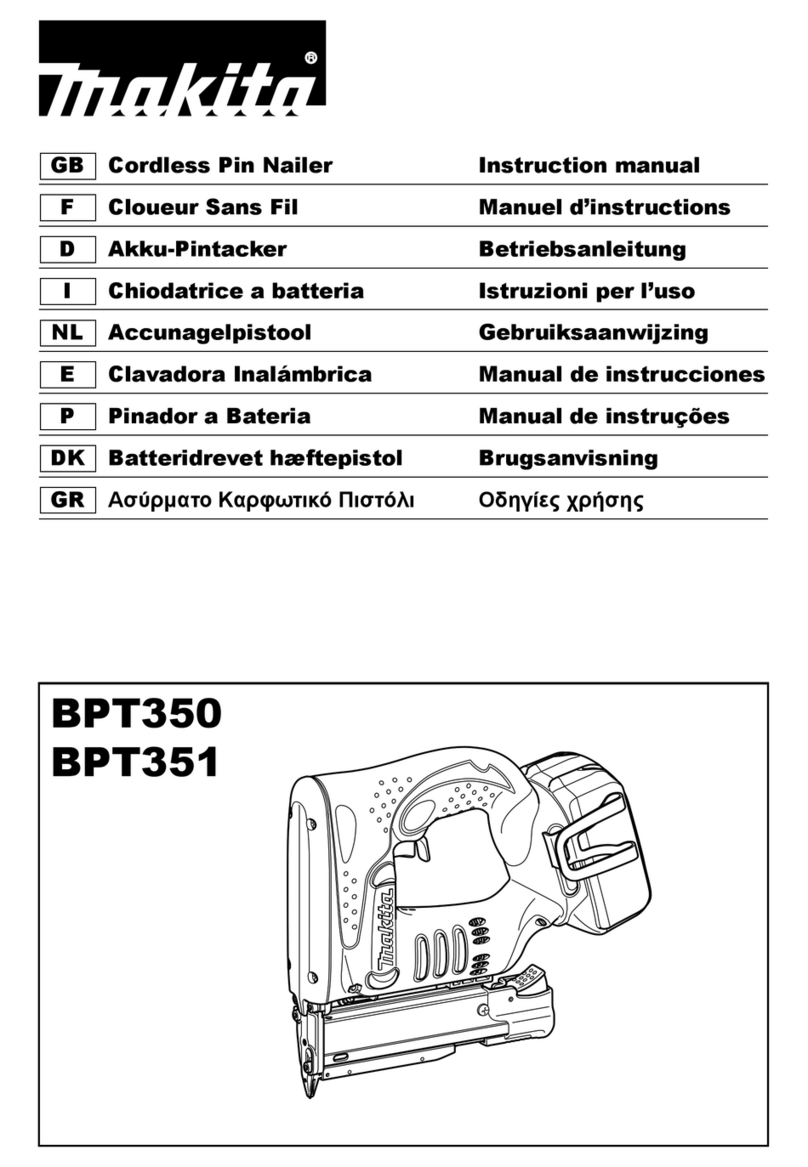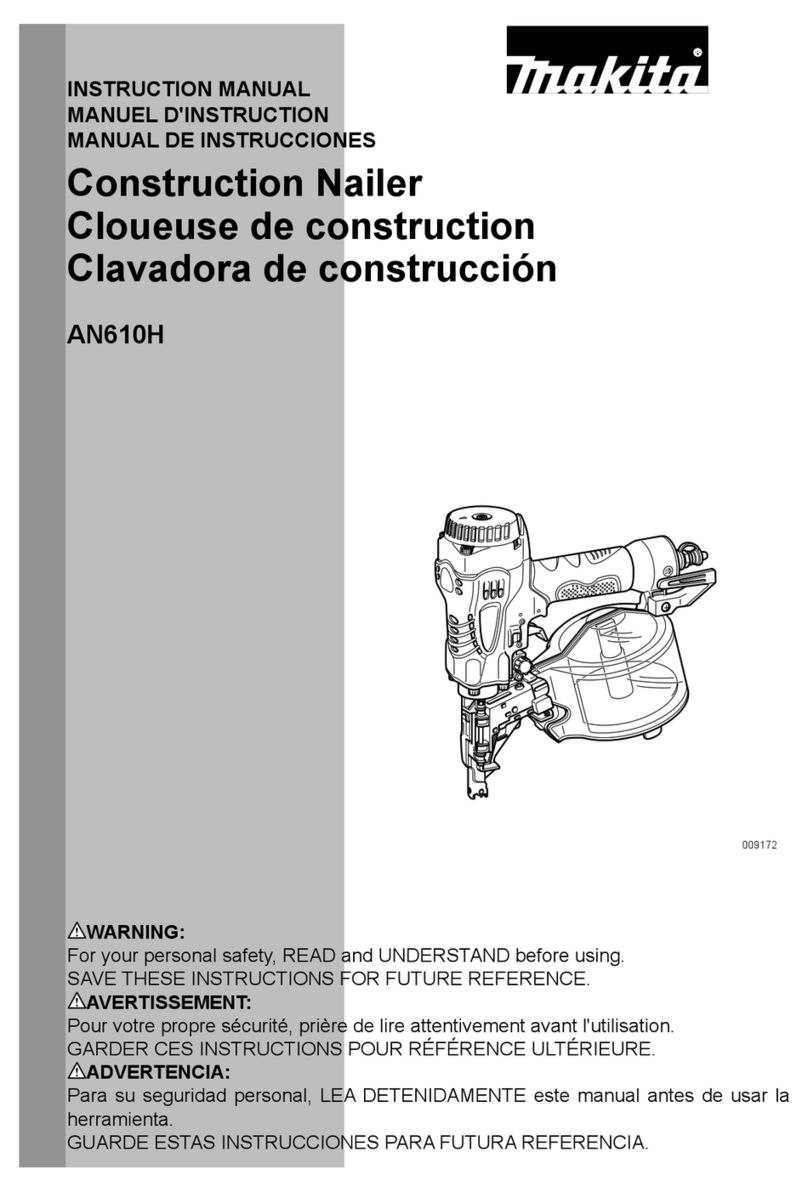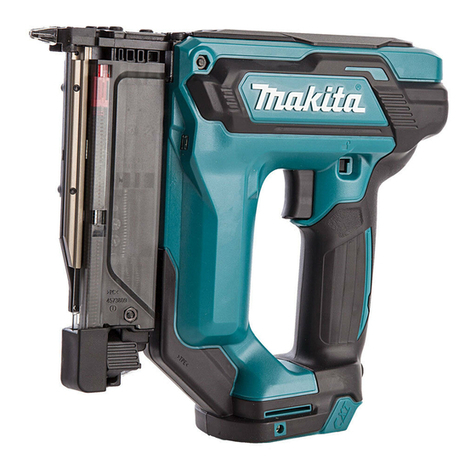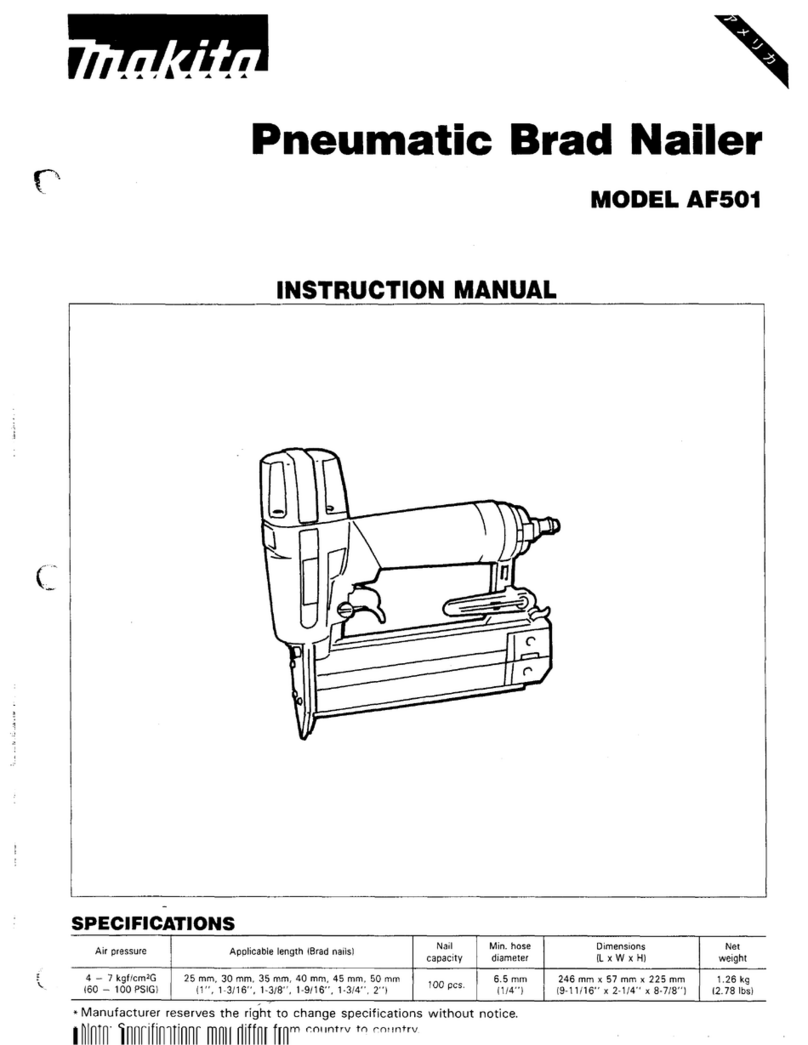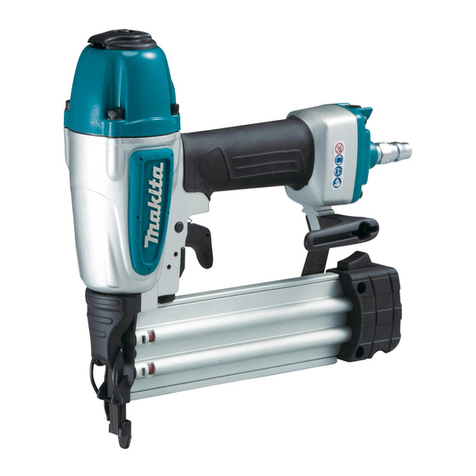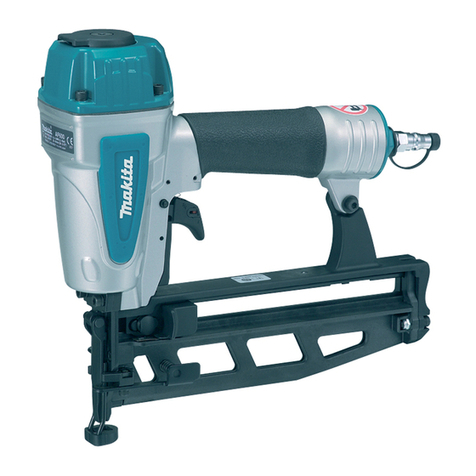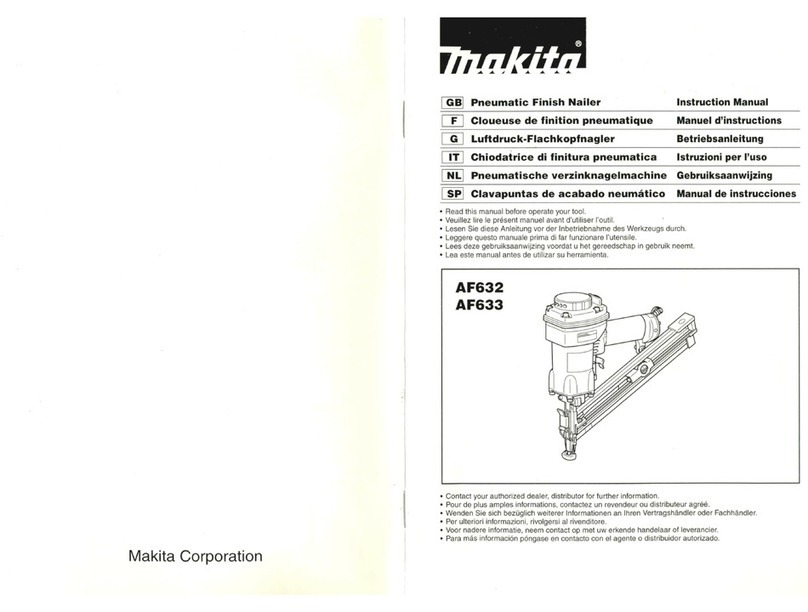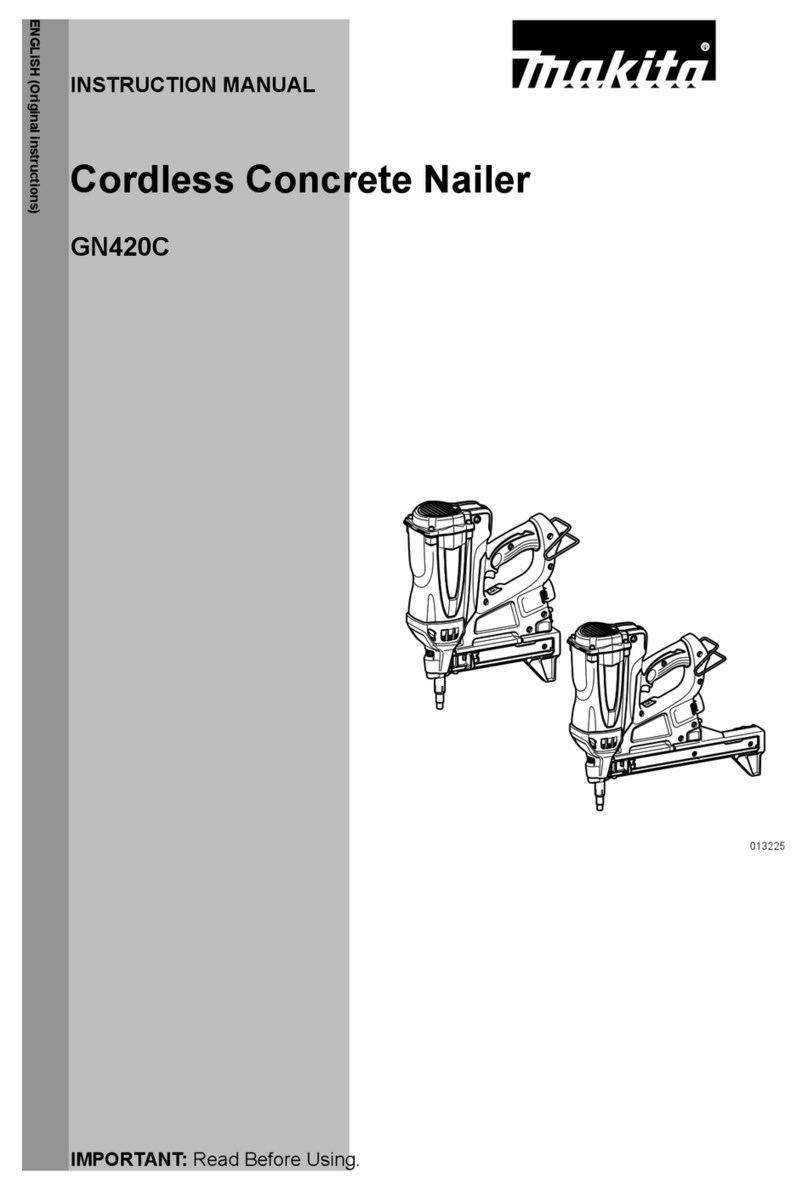
5ENGLISH
prevent workpieces from "ringing".
4. Use appropriate hearing protection.
5. Operate and maintain the tool as recom-
mended in these instructions, to prevent an
unnecessary increase in noise levels.
6. Take noise reduction measures, for exam-
ple placing workpieces on sound damping
supports.
Vibration hazards
1. The vibration emission during operation
depends on the gripping force, the contact
pressure force, the working direction, the
adjustment of energy supply, the workpiece,
the workpiece support. Conduct a risk assess-
ment regarding vibration hazards and imple-
ment appropriate controls for these hazards.
2. Exposure to vibration can cause disabling
damage to the nerves and blood supply of the
hands and arms.
3. Wear warm clothing when working in cold
conditions, keep your hands warm and dry.
4. If you experience numbness, tingling, pain or
whitening of the skin in your ngers or hands,
seek medical advice from a qualied occupa-
tional health professional regarding overall
activities.
5. Operate and maintain the tool as recom-
mended in these instructions, to prevent an
unnecessary increase in vibration levels.
6. Hold the tool with a light, but safe, grip
because the risk from vibration is generally
greater when the grip force is higher.
Additional safety instructions for gas tools
1. Use the tool only with the Makita genuine gas
container.
2. Be careful when using gas tools, as the tool
can become hot, affecting grip and control.
3. Gas fastener driving tools shall be used in
ventilated spaces.
4. In the case that liquid combustible gas comes
into contact with human skin, injuries may
occur.
5. Gas containers shall be marked according to
the required transport regulation.
6. Handle gas containers carefully and check
for damages. Damaged gas containers can
explode and cause injury.
7. Read and follow the instructions supplied with
the gas container.
8. Ensure combustible materials are not exposed
to hot exhaust gases.
9. Do not use gas tools in explosive areas as the
sparks generated in the tool may cause re or
explosion.
10. Gas containers should not be stored care-
lessly or at high temperature. Follow the local
regulations and gas container's instructions
for handling and disposal of gas containers
and batteries or accumulators.
11. For gas tools, a small release of gas might be
generated by regular operations.
Battery tool use and care
1. Recharge only with the charger specied by
the manufacturer. A charger that is suitable for
one type of battery pack may create a risk of re
when used with another battery pack.
2. Use power tools only with specically desig-
nated battery packs. Use of any other battery
packs may create a risk of injury and re.
3. When battery pack is not in use, keep it away
from other metal objects, like paper clips,
coins, keys, nails, screws or other small metal
objects, that can make a connection from one
terminal to another. Shorting the battery termi-
nals together may cause burns or a re.
4. Under abusive conditions, liquid may be
ejected from the battery; avoid contact. If con-
tact accidentally occurs, ush with water. If
liquid contacts eyes, additionally seek medical
help. Liquid ejected from the battery may cause
irritation or burns.
5. Do not use a battery pack or tool that is dam-
aged or modied. Damaged or modied batteries
may exhibit unpredictable behaviour resulting in
re, explosion or risk of injury.
6. Do not expose a battery pack or tool to re or
excessive temperature. Exposure to re or tem-
perature above 130 °C may cause explosion.
7. Follow all charging instructions and do not
charge the battery pack or tool outside the
temperature range specied in the instruc-
tions. Charging improperly or at temperatures
outside the specied range may damage the
battery and increase the risk of re.
Safety devices
1. Make sure all safety systems are in working
order before operation. The tool must not oper-
ate if only the trigger is pulled or if only the contact
arm is pressed against the wood. It must work only
when both actions are performed. Test for possible
faulty operation with fasteners unloaded and the
pusher in fully pulled position.
2. Securing the trigger in the ON position is very
dangerous. Never attempt to fasten the trigger.
3. Do not attempt to keep the contact element
depressed with tape or wire. Death or serious
injury may occur.
4. Always check contact element as instructed
in this manual. Fasteners may be driven acci-
dentally if the safety mechanism is not working
correctly.
Service
1. Perform cleaning and maintenance right after
nishing the job. Keep the tool in tip-top condi-
tion. Lubricate moving parts to prevent rusting and
minimize friction-related wear. Wipe off all dust
from the parts.
2. Ask Makita authorized service center for peri-
odical inspection of the tool.
3. To maintain product SAFETY and RELIABILITY,
maintenance and repairs should be performed
by Makita Authorized Service Centers, always
using Makita replacement parts.
4. Follow local regulations when disposing of the
tool.
SAVE THESE INSTRUCTIONS.
